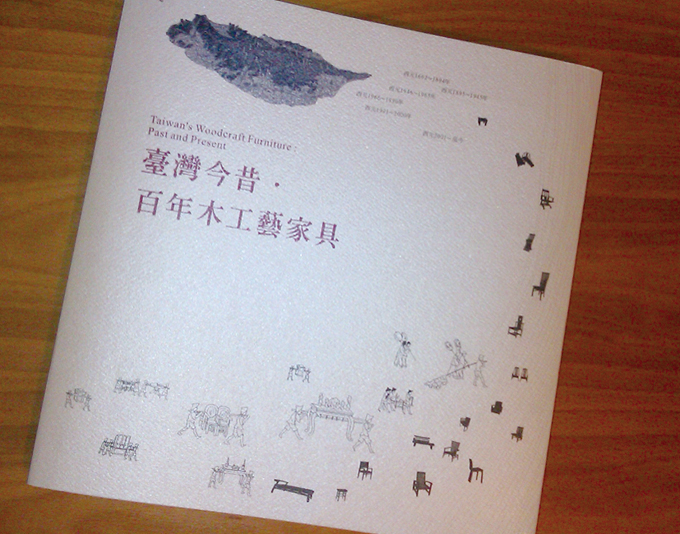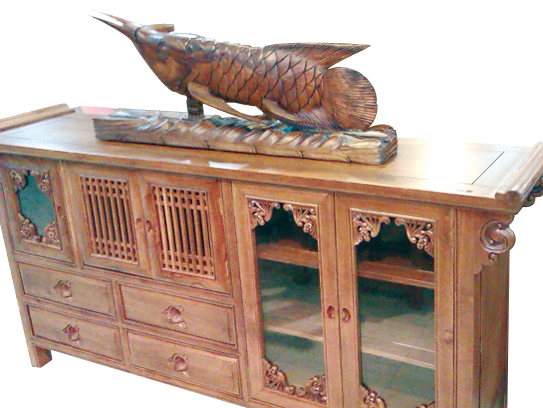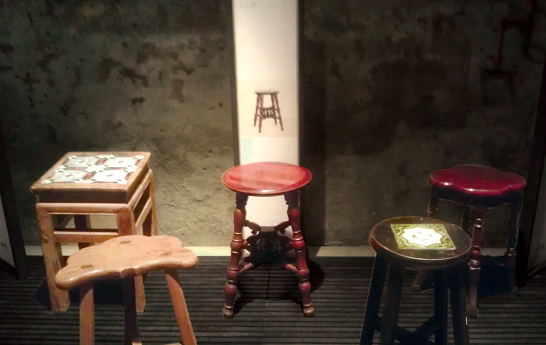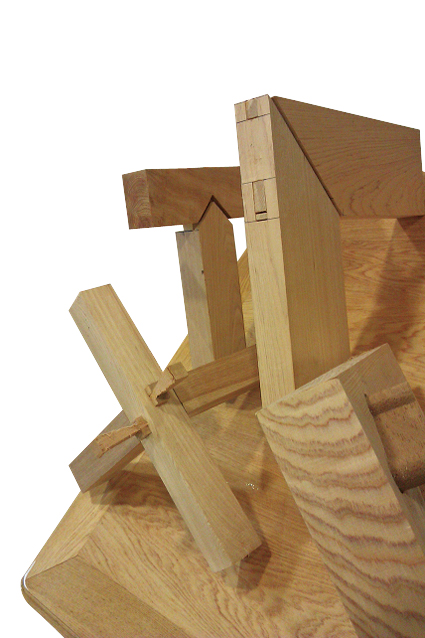Traditional Woodcraft Inspires New Creations
The cultural content of furniture from the past still influences living habits today
2013/04/11 | By Michelle HsuThe National Taiwan Craft Research and Development Institute (NTCRDI), an institution under the Ministry of Culture (MOC) that is dedicated to promoting traditional Taiwanese craftsmanship, published a book on Taiwan Woodcraft Furniture: Past and Present last December, providing an overall review of the woodcraft used in Taiwan-made furniture over the past century.

“While Taiwan's furniture industry underwent drastic structural change over the past few decades, now is the right time to publish this book and provide directions of development for Taiwan's wooden furniture industry,” commented Tsai Hsiang, director of the NTCRDI. In mid-January this year, Tsai was appointed secretary general of the MOC.
“A distinguishing feature of this book is that it reviews Taiwan's woodcraft furniture from the cultural aspect and discloses the cultural content of woodcraft,” Tsai noted.
“The links between furniture, cultural background, and civilization bring furniture much closer to people's lives,” wrote Culture Minister Lung Ying-Tai in her preface to the book. Lung points to the aesthetic approach that is used by the book in analyzing the woodcraft in Taiwan's furniture, noting that. “This approach highlights Taiwanese aestheticism.”
Cultural Background
“The goal of this book is to investigate the development and evolution of Taiwanese wooden furniture, and describe the contribution of artistic inspiration,” said Lu Yuan-hua, the book's editor-in-chief.

The book is very different from the previous publications in both content and format. “It presents the diversity, richness, and beauty of Taiwan woodcraft furniture in a simple but comprehensible way, helping readers gain further insights into the history, cultural background, style, and development of Taiwan's woodcraft furniture,” Lu explained. This approach allows readers to realize that the cultural phenomena surrounding furniture in the past still directly or implicitly influence our living habits today, he added.
The book examines how the “craftsmanship” that workmen used to present the value and quality of furniture became a characteristic feature of Taiwanese woodcraft furniture.
Lu noted that Taiwan has undergone five transitions of political power (Qing Dynasty, Japanese occupation, ROC, and two earlier periods of control by the Dutch and Spanish), and that each caused significant social and cultural transformations. These periods of Chinese and alien rule created a considerable range of cultural influence on society over the past four centuries.

Taiwan's departure from imperialistic Chinese traditions and its transformation from an immigrant society have taken place only within the past 100 years, producing a time of dramatic societal and political change. Its diverse social and cultural background has also injected new ingredients into Taiwanese furniture, differentiating it from furniture made in mainland China.
Techniques
The traditional mortise and tenon joinery technique was almost lost under the impact of alien culture following the end of the 50-year period of Japanese colonial rule, as Westernization took hold and a mixture of western and Chinese styling and technique took over. However, Lu observed, “The old technique was preserved in the end to become a source of inspiration for a new wave of artists who brought new elements to today's woodcraft furniture.”
According to the book, at least 16 different types of mortise and tenon joinery techniques have been developed to support the diverse structure of Taiwanese woodcraft furniture. Those commonly seen in today's wood furniture are actually the most basic and simple ones; more complicated techniques are rarely seen, perhaps because their time-consuming procedures doesn't fit contemporary society with its emphasis on streamlined efficiency—or perhaps simply because today's people are not familiar with them.

In addition to structure, the book also discusses the decorative patterns used in wood furniture. Carving and engraving are popular techniques; auspicious geometric signs and floral, plant, and animal images are common decorative themes, while images of deities are found on items for special purposes such as worshipping tables.
Inlay is another decorative technique. Shells are a high-end inlay material because of their shining natural tinge and solid texture. Tiles have recently become an alternative. In early years, wood of different grains and textures was also used as inlays; carpenters should carve out the wooden inlay pieces, and then insert them into the furniture. Wood inlay techniques were once popular for traditional high-end wood furniture, but they are rarely seen furniture made today.
As aesthetics and manufacturing techniques changed over time, so did the old decorations and patterns; they have been lost, forgotten, or replaced by alien imports. In some cases, however, they have found their way back to traditional woodshops. “Even in the midst of internationalization and globalization,” Lu explained, “some of the old formulas associated with wood furniture production have been passed on.”
Lu cited the dictum “Let the flat be flat, straight be straight, and curves be smooth,” which highlights the principles of Chinese furniture-making over the ages. In this modern, post-industrial society where every piece of work is based on carefully drawn blueprints, the sayings “cut precisely to make maximum use of wood” and “use up everything; don't waste materials” have gained new meaning for a new generation of designers, carpenters, and factory workers.
To describe the evolution of Taiwan's furniture industry over the past five or six decades and identify the trends of the future, the book has selected three manufacturers, one each from Taipei, Taichung, and Tainan, that are among the most representative in the industry: Ricardo Lynn & Co., Yong Jin Woodworks, and Yung Shing Furniture. All three have been in business for over a half century, yet differ in management and style. Ricardo Lynn, located in northern Taiwan, has transformed its focus to imported furniture featuring classy Western styling. Yong Jin, in central Taiwan, emphasizes Taiwanese nativism. Yung Shing, in the south, has extended its operations into mainland China and concentrates on “Oriental furniture—new concept for humanistic life.” The differences between the three are striking, and add meaning to this worthwhile book.




